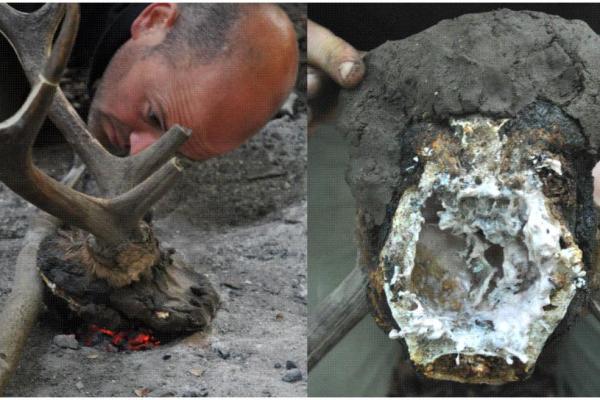
YORK, England, April 14 (UPI) — Researchers in England have spent the last four years reconstructing ancient shamanic headdresses found at an Early Mesolithic archaeological site in North Yorkshire.
To get a better understanding of hunter-gatherer rituals, archaeologists at the University of York used flint blades, hammerstones and fire to recreate antlered deer skull caps.
Their analysis of the oldest evidence of a shamanic costume in Europe suggests these hunter-gatherers spent significant time and effort on ritualistic dress.
Researchers surveyed some 24 male red deer skull caps recovered from the Star Carr site — all made from the top of the skull with the antlers attached. To make the skull caps, the lower jaw and cranial bones were removed while the frontal jaw bone was perforated.

Three-dimensional laser scanning enabled researchers to study these cut marks and perforations in detail. The incisions were found radiating from both sides of the skulls.
Researchers believe the hunter-gatherers packed the skulls in clay before cooking them in the fire in order to remove skin and make the bone more malleable.
“This research shows how experimental archaeology can give important insights into rare ancient artifacts,” study leader Aimee Little, an archaeologist at York, said in a news release. “Knowing fire was used invokes a real sense of atmosphere surrounding the making of these ritual shamanic headdresses.”
They also chipped away bone to lighten the skull. The excess skull was likely used to make barbed blades used to hunt and fish. When skulls were decommissioned from ritualistic use, they bone may have been recycled into more blades.
Researchers detailed their discovery and analysis in a new paper, published this week in the journal PLOS ONE.
“These headdresses are incredibly rare finds in the archaeological record,” added excavation co-leader Nicky Milner.
“This is the only site in Britain where they are found, and there are only a few other headdresses known from Germany. This work into how they might have been made has given us an important glimpse into what life was like 11,000 years ago.”






